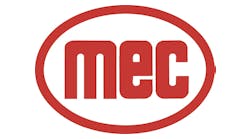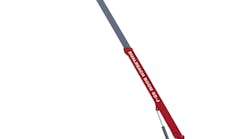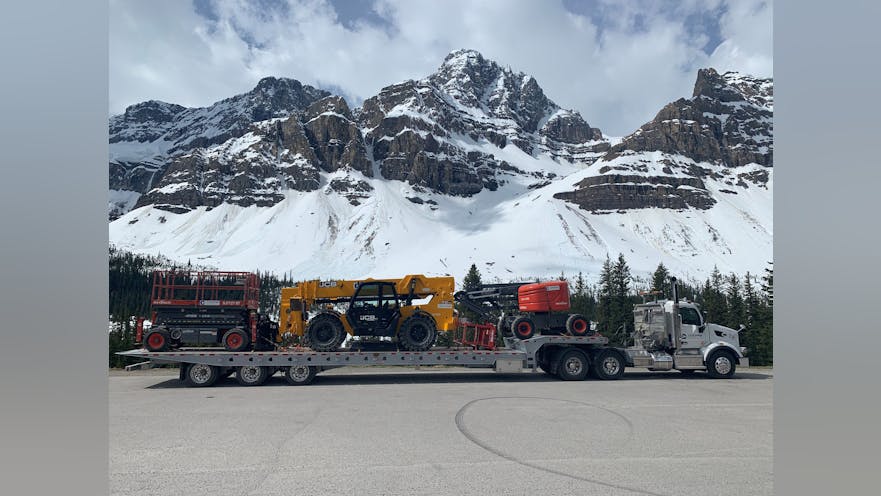While RER consulted with a few leading economists on their overall analysis of 2023 and their expectations for the economy in 2024, it was equally important to hear what rental companies experienced in 2023 and how they view the year ahead.
By and large, 2023 was an outstanding year for most equipment rental companies. Demand was high from contractors and construction companies of many varieties and sizes, although obviously some segments of the rental market were busier than others. It shouldn’t be ignored that supply chain challenges were still problematic for some types of equipment and long lead times were out there for some aerial and earthmoving categories and some smaller machines as well, making it challenging to meet customer demand at times. But still, overall results were strong and 2023 was a record year for many in the rental industry.
Many expected 2023 would slow down some as the pace of growth inevitably must and feared a slowdown as interest rates rose. But customer activity was generally better than predicted and now the wider expectation is a slower pace of growth in 2024.
“For us, 2023 marked a return to normalization, especially as the year went on,” says Kurt Barney, Vandalia Rentals. “During the first half of 2023, the majority of equipment manufacturers began catching up and our fleet purchases (mostly) arrived as scheduled. This allow us to begin the process of addressing our replacement cycle, which had been pushed much of 2020-22.”
Kevin Fitzgerald of Rental Service Investment Corp. says, “2023 was a good year for us, particularly in our general rental group. Used equipment sales were strong and our same store rental revenues increased nicely.”
Ryan Stallings of Ring Power says 2023 was a record year for his company in most aspects, while Guy Manuel of Stephenson’s Rental Services, based in the Toronto area, says 2023 was “another record year for us at Stephenson’s. Not only do we continue to grow aggressively, but we are very proud to have outpaced the market growth in every province we operate in today (Ontario, Quebec and Alberta). What’s even more impressive for us is that we continue to be more strategic in terms of the customer segments we want to dominate and that underpins this growth. Choosing a lane and doing that better than anyone is difficult, but we are really starting to see the benefits in all facets of our business.”
Fellow Canadian equipment rental company Cooper Equipment Rentals posted an outstanding 30 percent uptick in equipment rental revenue in 2023.
For many, however, enthusiasm about 2023 was solid but more muted. Steve Meadows, CEO of The Berry Companies says, “In general, our rental business has improved year over year (April-November). Not crazy improvement but improved.” Colin Grill, CEO of Aaction Rents, says his company posted a 6-percent year-over-year revenue increase, while Star Rentals’ CEO Bob Kendall adds, “Star Rentals had a solid 2023 with continued top-line growth.”
Kendall’s views on 2024 were optimistic but guarded. “Although optimistic about 2024, it is hard to ignore some of the negative impact from rising interest rates,” he notes.
Scott Cannon, CEO of BigRentz, predicts the online rental specialist will be “Up, significantly, based on numerous large customer wins toward the end of [2023].”
“We feel 2024 will be a good year, but not an easy year,” says Vandalia’s Barney. “Strategy will matter again and operators that plan and execute accordingly should do well. Construction activity remains near all-time highs, infrastructure spending is moving forward, and the challenging labor environment is unlikely to abate in the near term. We feel activity will continue grinding forward at a pace similar to the back half of 2023 for all of 2024.”
Marty Hardin of B&G Rental & Supply predicts a modest increase in 2024, while Berry’s Meadows foresees a slight improvement of “maybe 5 percent.”
Ring Power’s Stallings and Stephenson’s Manual both expect double-digit increases in 2024. Also expecting a big year are Tony Fiscelli, Ryan Group and Thomas Beasley of Lifting Gear Hire Corp. “All signs in 2024 are optimistic that we will maintain at the same growth levels we experienced in 2023,” they say. “Plenty of large construction projects are underway and planning to continue in the new year.”
Demand is demanding
Going into 2024, most, but not all rental companies, expect reasonably strong customer demand in the year ahead. Paul McDonnell, CEO of Maxim Crane, has high expectations for the crane rental industry in 2024 and beyond. “It truly feels like an unprecedented time in the market for crane rental and the provision of turnkey lift services, as we are tracking broad-based growth across our key verticals of infrastructure and industrial manufacturing through 2024 and beyond,” he says. “Driven by significant investment from the private sector and federal expenditures such as the CHIPS Act and the Investment & Jobs Act, the five-year projection for construction demand, specifically crane rental and the provision of turnkey lift services, is strong.”
“Local demand continues to remain healthy, and backlogs look good,” says Vandalia’s Barney. “The last half of 2023 is now closely aligning with pre-COVID seasonal trends, which we think will continue through 2024 as well.”
“Vertical expansion projects seem to be on the decline, which will affect crane rentals,” says B&G’s Hardin, which rents cranes as well as general rental. “But infrastructure and data centers seem to be on the rise.”
“We have seen very high demand based on quote and order activity in the past couple years and expect the same in 2024,” says the Lifting Gear group.
“Demand for heavy equipment was up and homeowner was down,” says Grill. “I anticipate homeowner to rebound once interest rates go back down.”
The challenge of maintaining rental rates
The “post-Covid” period in the rental industry has been one of overall steady demand, and rental companies have taken advantage of the opportunity to raise rental rates in an industry where competitive pressures have tended to exert downward pressure on pricing. Historically rental rates have always been up for negotiation. While this dynamic hasn’t changed, with supply chain challenges well-publicized in virtually all industries because of the pandemic, customers have been more prone to appreciate the fact that rental companies have been facing increased costs. With rental companies facing increased fuel costs as well as heightened equipment prices, they’ve been able to communicate to their customers that they’ve had no choice but to raise rates to stay in business.
This reality is likely to be challenged in 2024 as supply chains are, for the most part, returning to normal. But the cost of buying equipment has risen and with higher interest rates and moderately slowing demand according to many, competition could heighten, leading rental companies to succumb to the temptation to lower rates.
“As new equipment costs soared over the past years, we have unfortunately had to pass along increases to our customer base, but we do see our input costs slowly normalizing and anticipate 2024 to continue to flatline, albeit at higher-than ever costs,” says Stephenson’s Manuel. “Considering our aggressive growth, we have felt the immediate impact of the inflated costs of equipment a bit more than the average competitor, which is forcing us to continue to be disciplined in our approach. 2024 will be more of the same.”
“Rental rate increases have leveled off for the time being as utilization has slowed generally in the Pacific Northwest,” says Star Rentals’ Kendall. “Most of our competitors are sitting on a fair amount of inventory these days. We have even seen a small amount of price cutting here and there as the winter weather takes hold. One might argue that rental rates have peaked for the time being and no doubt the OEMs are sitting on some unsold inventory in some categories.”
The challenge of maintaining strong rental rates always intensifies during periods of softening demand, forcing rental companies to be resolute when it comes to maintaining rates.
“Rate pressures continue and will always be part of this industry,” says Barney. “Our focus continues to be ensuring we meet the demands of our customers and while delivering value that supports the rates we must charge to do so.”
“We do see rental rates increasing in 2024 but not as much as in 2023,” says REIC’s Fitzgerald. “As long as demand is strong and our competitors stay disciplined, then we expect to see rates increase.”
“Rental rates have been steadily increasing throughout [2023] and I do not believe they have peaked,” says Mike Madej, who headed up Altorfer Power Systems in 2023, but has since moved to the power rental division of Yancey Brothers, a Georgia-based Caterpillar dealer. “The largest drivers of these rate increases are scarcity of equipment due to supply chain issues and new higher quality technology. Generators, air compressors, heaters, air conditioners and ancillary equipment all cost more. Rental rates need to increase in order for us to stay profitable.”
B&G’s Hardin adds that companies are more determined to keep rates at a high level. “We have followed suit with most of the national chains systematically raising rates 5 to 7 percent,” he notes. “People seem to be more focused on driving rates and restoring profitability than being the low-cost producer.”
Rates based on achievements
To sum up the topic of rates, most rental companies seem to agree that rental rate pressure is likely to increase in 2024 and while many seem to feel there is still room for rates to increase, rental companies will likely be more hard-pressed to do so. Rental companies seem to believe that while increased costs are justification for increases, others point out their achievements also are good reason to charge for their increasingly enhanced services.
“The Big 3 and a number of CAT dealers have done a really good job of expanding their tech offerings and telematics,” says BigRentz’s Cannon. “This is good for customers, and I would expect other emerging large regional rental companies to follow suit over the next couple of years.” Cannon adds that BigRentz itself will be rolling out additional groundbreaking technology this year.
“In 2023 we continued to make investments within our four key areas of focus: talent, fleet, footprint, and technology,” says Barney. “We onboarded and promoted several experienced individuals aimed at increasing penetration within each MSA we operate in; opened a brand new 5-acre, 20,000 square foot facility on the east side of Cincinnati; added $30 million in new equipment; and deployed several new technological advancements. On the technology front, we’re in the final stretch of a few multi-year projects, including having nearly all our major rental cat/cls on a single, integrated telematics platform.”
For fast-expanding Cooper Equipment Rentals, a coast-to-coast Canadian rental company, CEO Doug Dougherty, who predicts continued strong growth in 2024, the focus is always on how the company can improve its offerings to the customer.
“We made a commitment a few years back to make heavy investments in technology, a lot of that has gone into reporting and analytics, advanced reporting and analytics tools,” Dougherty says. “So the focus this year and next year is on things that can be more value to customers, bringing better insight to customers on things like fleet usage and emissions data, delivery status, costing analysis, mobile on and off rental, those kinds of tools for customers.
“We’ve been able to provide customers with a lot of data, but now it’s moving to the next level where the data is great but they’re really looking for insights into their business and how they can organize their sites more efficiently. Be more efficient from the standpoint of emissions and fuel consumption and those kinds of things.”
The industry may go through some softness this year, but likely interest rates will drop later in the year, stimulating more end user activity. Acknowledging that some headwinds are out there, most rental players remain highly optimistic heading into 2024.









